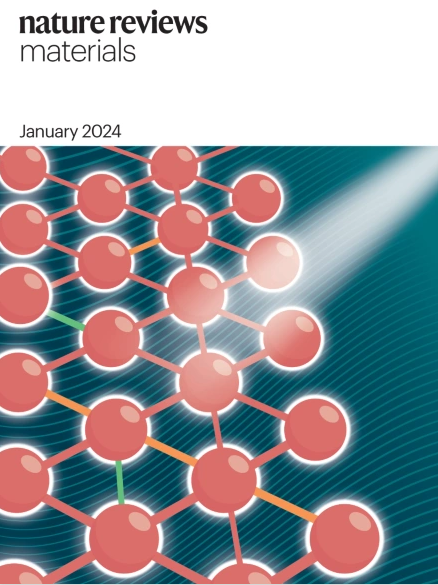高熵纳米材料的合成方法
IF 86.2
1区 材料科学
Q1 MATERIALS SCIENCE, MULTIDISCIPLINARY
引用次数: 0
摘要
在过去的二十年里,“高熵”已经成为材料科学中的一个关键概念,最近这个概念扩展到了纳米材料。高熵材料的特点是包含五种或更多的主元素,其比例几乎相等,利用熵来促进组成复杂的单相材料的形成,而不是相分离的替代品。高熵纳米材料广泛的组成空间,以及它们独特的结构和催化性能,已经引起了相当大的兴趣。高质量的单相高熵纳米颗粒的合成对于充分发挥其驱动创新的潜力至关重要,并且存在许多合成途径。自上而下的方法从大块高熵材料开始,将其分解成纳米级结构,而自下而上的策略从原子开始,通过成核和生长来构建纳米材料。本文对高熵合金和高熵金属间纳米颗粒的合成方法进行了分类和比较。我们的讨论表明,胶体合成可以很好地控制高熵纳米颗粒的组成、大小和形状,同时也提供了其他方法无法达到的亚稳态的途径。本文章由计算机程序翻译,如有差异,请以英文原文为准。


Synthetic methods for high-entropy nanomaterials
‘High entropy’ has become a key concept in materials science over the past two decades, with this concept more recently extended to nanomaterials. High-entropy materials, characterized by the incorporation of five or more principal elements in nearly equal proportions, leverage entropy to promote the formation of compositionally complex single-phase materials rather than phase-segregated alternatives. The extensive compositional space of high-entropy nanomaterials, as well as their distinct structural and catalytic properties, has garnered considerable interest. The synthesis of high-quality single-phase high-entropy nanoparticles is important to fully realizing their potential to drive innovation, and numerous synthetic routes exist. Top-down methods begin with bulk high-entropy materials and break them down into nanosized structures, whereas bottom-up strategies start from atoms and build nanomaterials through nucleation and growth. In this Review, we categorize and compare the synthetic methods for high-entropy alloy and high-entropy intermetallic nanoparticles. Our discussion reveals that colloidal synthesis offers excellent control over the composition, size and shape of high-entropy nanoparticles while also providing pathways to metastable states that are not always accessible by other methods. High-entropy nanomaterials are characterized by the incorporation of five or more principal elements in nearly equal proportions. This Review highlights how different synthetic methods for these nanomaterials can facilitate control of phase and particle size and shape for applications such as catalysis.
求助全文
通过发布文献求助,成功后即可免费获取论文全文。
去求助
来源期刊

Nature Reviews Materials
Materials Science-Biomaterials
CiteScore
119.40
自引率
0.40%
发文量
107
期刊介绍:
Nature Reviews Materials is an online-only journal that is published weekly. It covers a wide range of scientific disciplines within materials science. The journal includes Reviews, Perspectives, and Comments.
Nature Reviews Materials focuses on various aspects of materials science, including the making, measuring, modelling, and manufacturing of materials. It examines the entire process of materials science, from laboratory discovery to the development of functional devices.
 求助内容:
求助内容: 应助结果提醒方式:
应助结果提醒方式:


